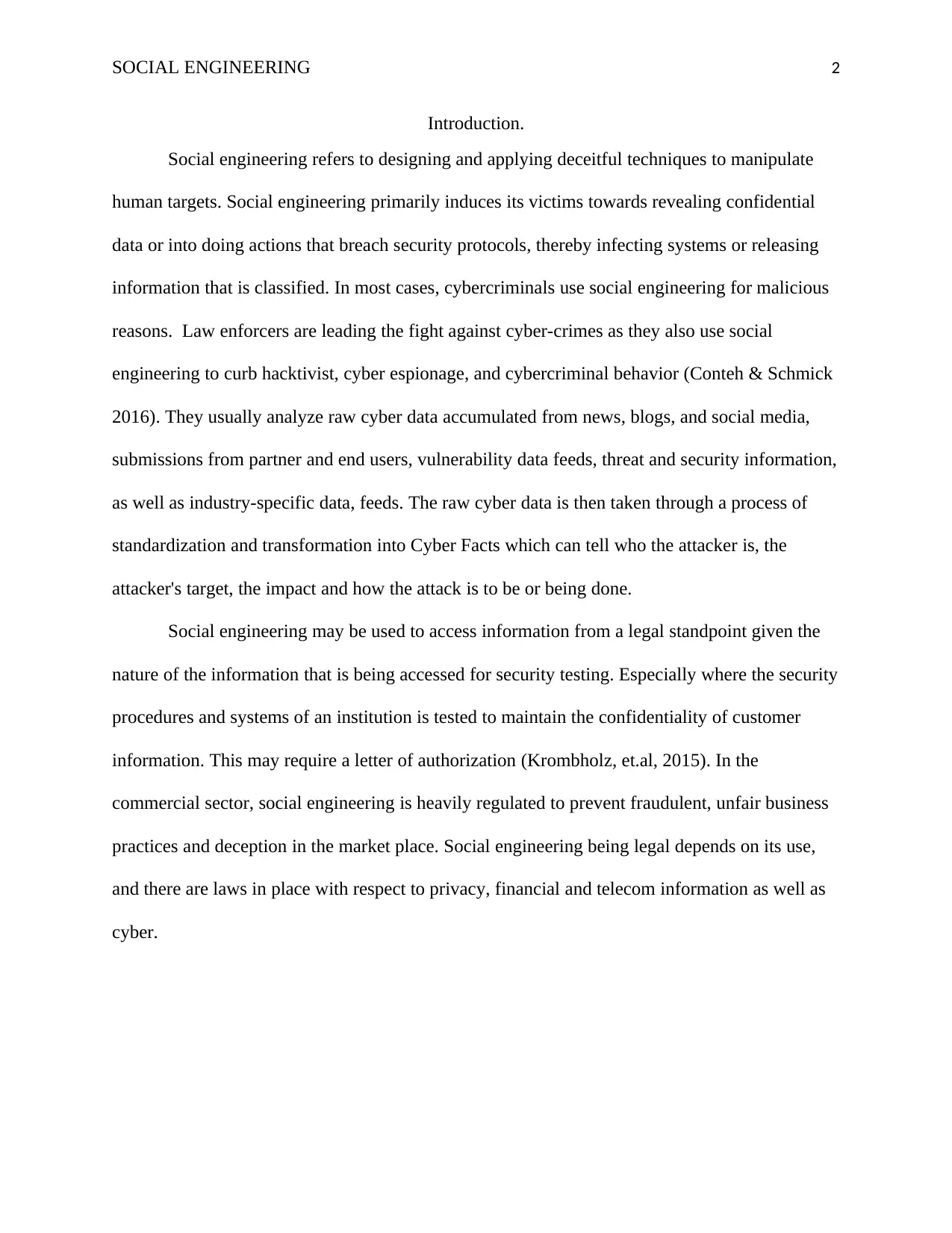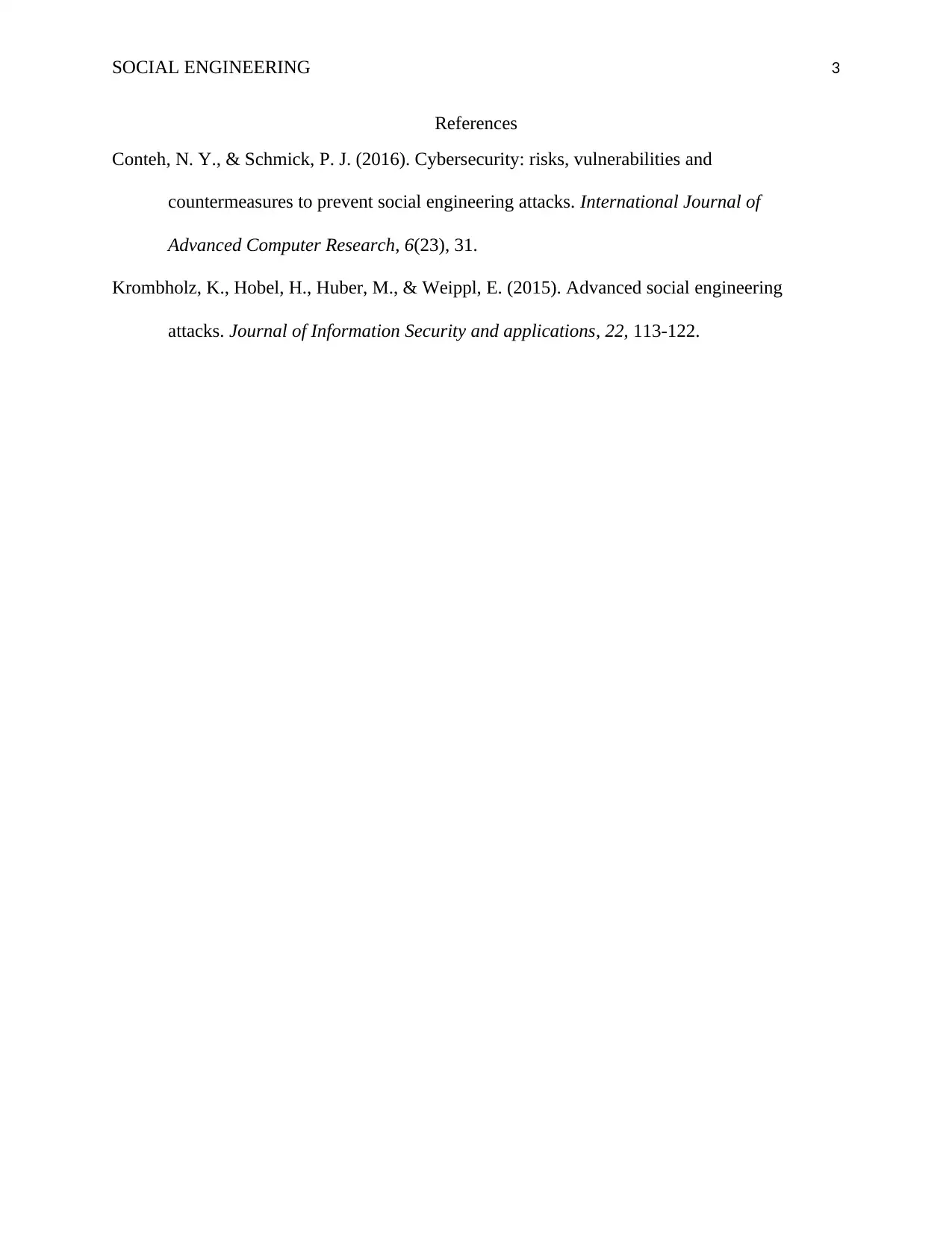Cybersecurity: Social Engineering, Attacks, and Defenses Report
VerifiedAdded on 2022/11/18
|3
|376
|90
Report
AI Summary
This report delves into the realm of social engineering within cybersecurity, examining its implications and applications. It highlights how social engineering techniques are used to manipulate individuals, leading to breaches in security protocols and the release of confidential data. The report discusses the legal aspects of social engineering, particularly in the context of security testing and data privacy, while also addressing the regulations that govern its use in the commercial sector to prevent fraudulent practices. It references relevant academic sources to support the analysis of cybercrimes, including how law enforcers utilize social engineering to combat cyber threats and the methods employed to analyze cyber data for security purposes. The report covers the types of social engineering attacks, and the importance of security measures.
1 out of 3










![[object Object]](/_next/static/media/star-bottom.7253800d.svg)